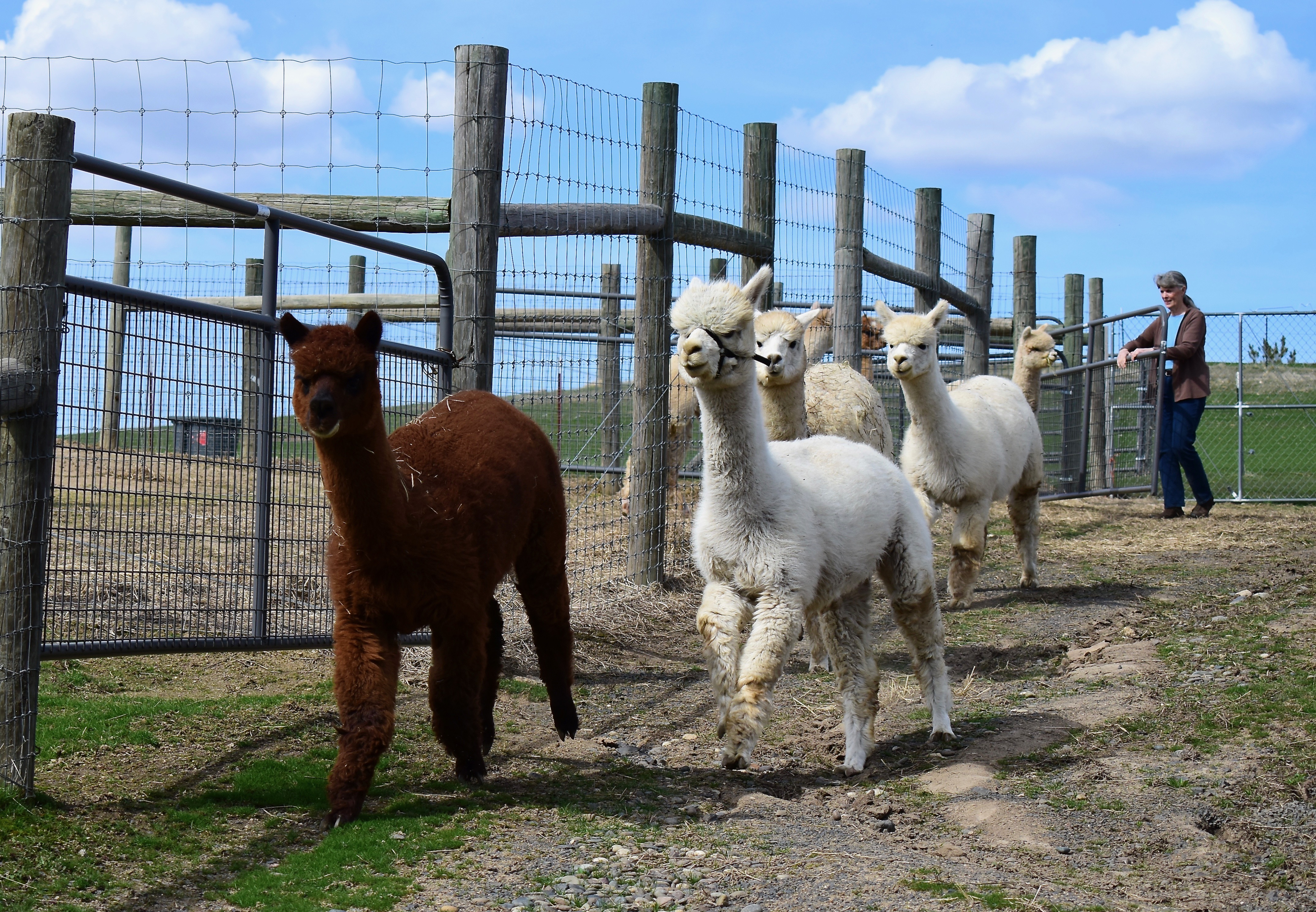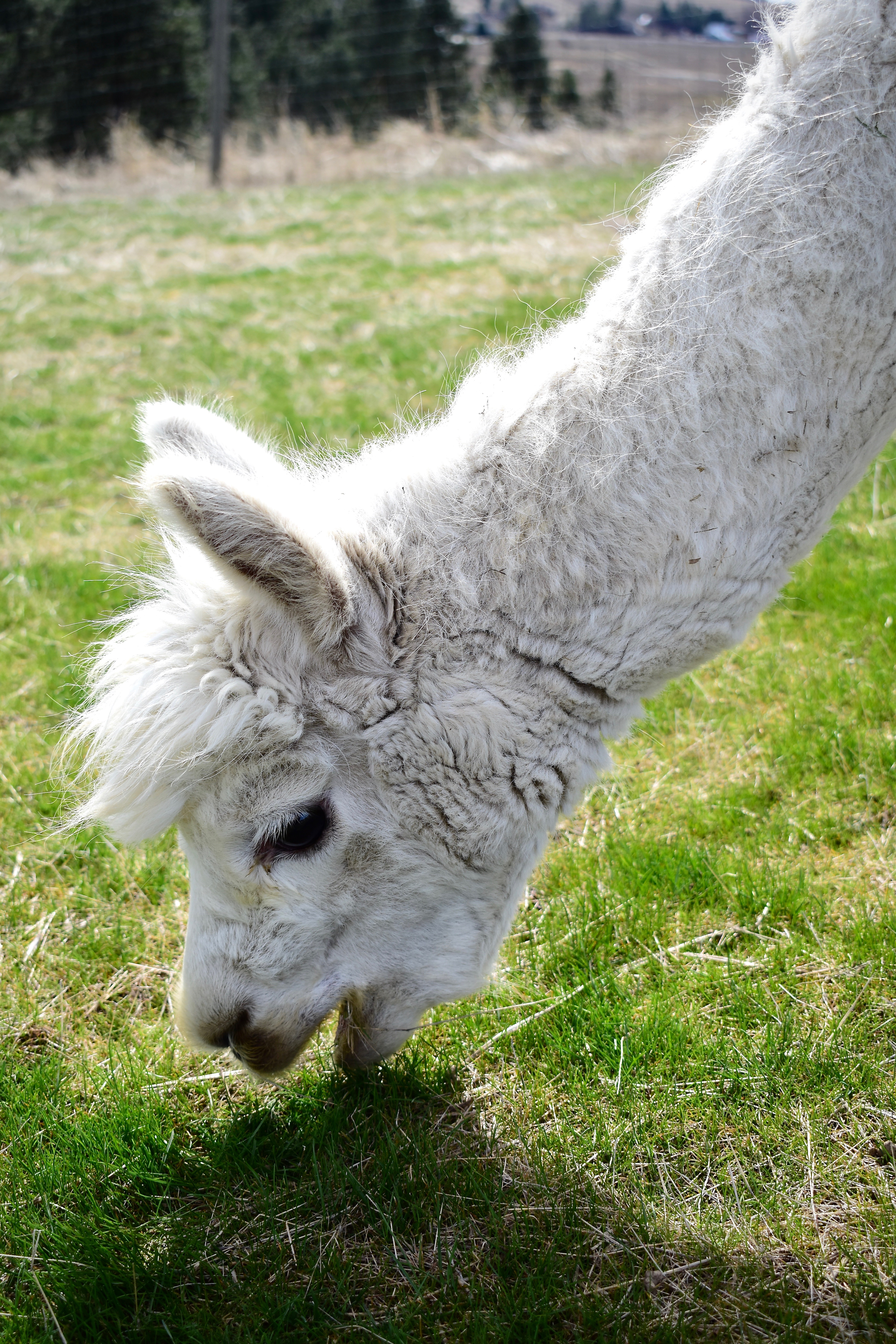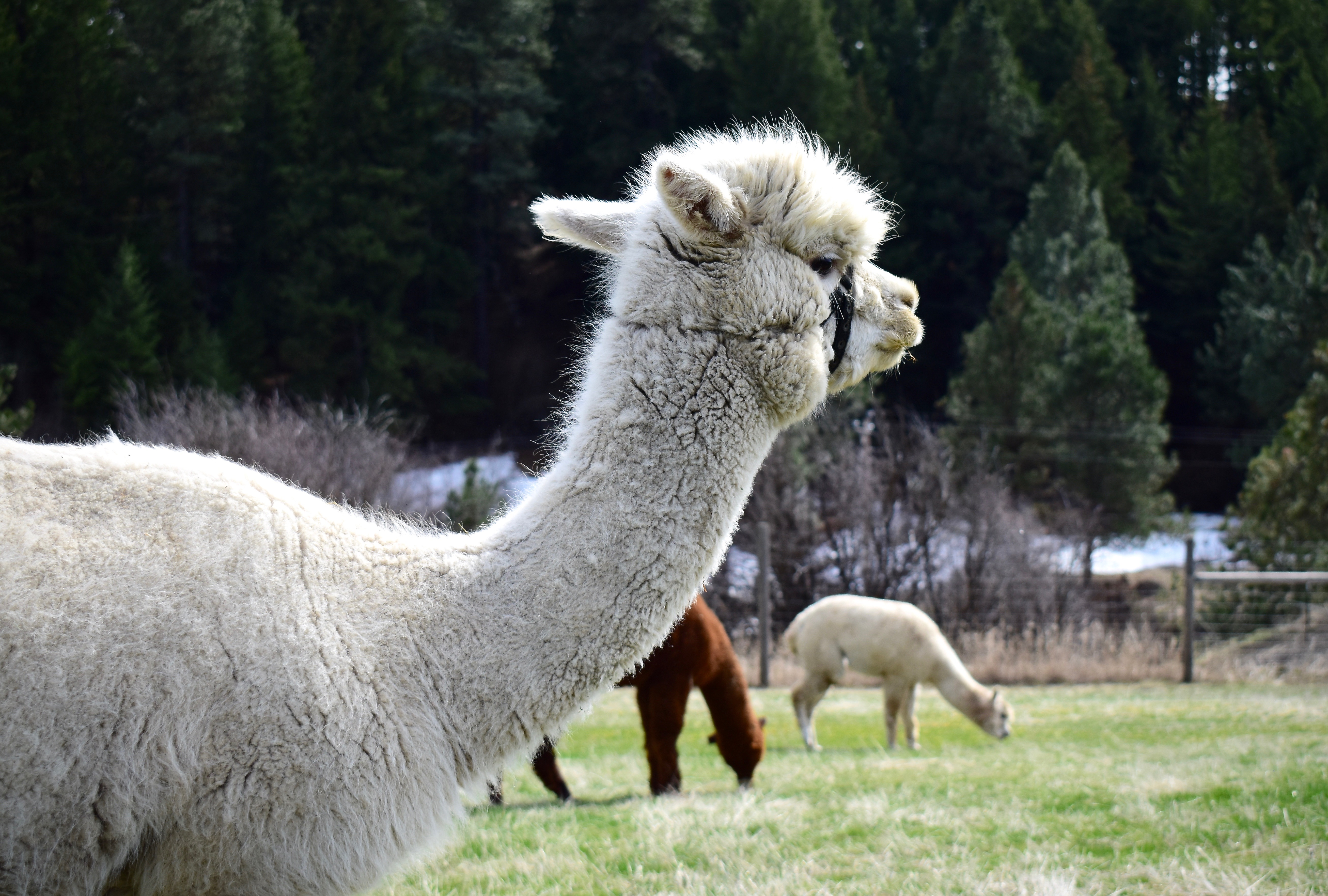Run by Patch and Debbie Blakey since 2000, Stirling Ridge Alpacas is a local home and breeding ground for the unique animal, a member of the Camelid family often mistaken for the llama.
“The inspiration was entirely Scottish and Celtic, and each time we name one, it’s a reflection of that,” Patch said.
Currently home to 17 alpacas — four generations in total — the farm operates as both a storefront and a bed and breakfast, complete with a private entrance for guests.
Only a short walk separates the house from the hay-filled barn, so the alpacas are almost always within viewing distance — even for guests.
And for Debbie, a prior horse owner, the alpaca was immediately a welcome and relaxing change of pace. She encountered her first alpaca shortly after moving to the area in 1995 at Grazing Hills Alpaca Ranch, a family-operated farm located nearby in Viola, Idaho.
“I was told how much they cost, and my response was ‘Oh my word,’” she said. “And then of course we bought our first one, a female, right after.”
Typically sold for thousands of dollars, the animal’s asking price tends to vary depending on the age and quality of fleece.
Compared to Debbie’s past experience, alpacas are low-maintenance, only requiring about 25 cents per day to feed each one. Aside from the low cost, she said it’s surprisingly easy to pick up after them.
“To put it into perspective, horses output more in one day than all of my alpacas do in one week,” she said. “So, you could say maintenance is pretty low.”
In addition to breeding, growing and selling animals, Stirling Ridge sells raw fleece products — socks, scarves and hats — and provides boarding and rent-a-womb services as well.
As a means to prevent population overcrowding, gender separation is critical. The Blakeys split the alpacas into four distinct pens: one male and three female.
“Oh, they get along far too well,” Debbie said. “I would have at least a million babies, and I don’t think anyone can handle that.”
This particular alpaca group spends much of their time indoors, content with hay eating and back-and-forth humming — a communication method most frequently seen between mothers and their newborn
babies. Occasionally, rolling around in the dirt serves as a pastime, as well.
And in the warmer months, the alpacas are released into the larger pastures for short periods of time — a decision they much look forward to, as they are able to run and eat grass to their heart’s content.
However, the animals’ thick fleece — often weighing up to 10 pounds or more — can quickly cause overheating and exhaustion upon exposure to the sun. In part to help comfort the alpacas, shearing takes place once a year, typically toward the end of May.
“For an alpaca breeder, fleece is the harvest,” Debbie said. “And it’s not to be confused with fur or even hair. It’s fleece, fiber or wool.”
These samples are sent to nearby labs, where the various fibers are graded on their microns, the measurement of one fiber’s length that determines both its softness and fineness. For certain alpacas with worse results, it’s helpful advice on how to adjust the breeding process going forward.
Initially, the couple said they faced difficulties and uncertainty in their new career path.
“For a while the market was so low, and alpaca breeders were dissatisfied — we were just trying to live,” she said.
Yet after some time had passed, the farm’s future began to brighten. Dirk, the couple’s 11-year-old prize alpaca, took home the first-place trophy in 2014’s national spin-off class. Still with an ultrafine micron of 18, the male alpaca ranks in the 99th percentile.
“I don’t want to brag because he does have his downsides, but he’s phenomenal in several categories,” Debbie said.
A key grading component is how fine the fleece stays as it continues to age. Many alpacas gradually grow coarser fleece, but Dirk is an exception to the norm. With only 193,000 registered alpacas in the United States, Debbie said she believes the rare South-American species is still growing in popularity.
“When we used to tell people we had alpacas, they would respond with, ‘That’s the bird, right?’” she said. “Sometimes people even got emus and alpacas confused, but now it seems like everyone knows the difference.”
Alpacas only weigh between 100 and 200 pounds and are defined by their pointed ears, soft pads, reserved personalities and long gestation periods — often up to an entire year.
“Everyone has the idea that they’re a cuddly animal, a people-lover,” she said. “But they’ll do their best to move away from you if they ever get the opportunity.”
Just like other members of the Camelid family, the gentle alpacas are capable of spitting when irritated or stressed.
“They’re shy, but sometimes they’re tolerating, too,” she said. “The earlier you can build that confidence and trust with them, the better off you’ll be.”
Alpacas can be one of 22 colors, the most natural color variety of any fleece animal. Many breeders prefer lighter fleece, as it lends itself better to certain dyes. But for the Blakeys, the color is not what matters.
“(Patch) has always been the handyman, I take care of the critters. It’s why we stay with it, it’s just so enjoyable every day,” Debbie said.
Story by Max Rothenberg
Photos by Olivia Heersink
Design by Pepe Maciel
